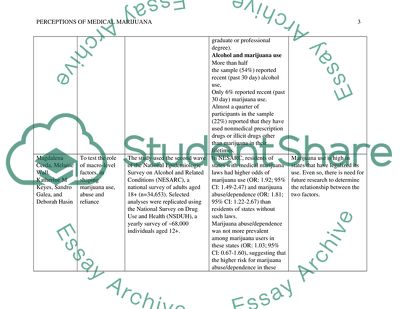Cite this document
(Perceptions of Medical Marijuana Literature review, n.d.)
Perceptions of Medical Marijuana Literature review. https://studentshare.org/health-sciences-medicine/1876825-meta-analysis
Perceptions of Medical Marijuana Literature review. https://studentshare.org/health-sciences-medicine/1876825-meta-analysis
(Perceptions of Medical Marijuana Literature Review)
Perceptions of Medical Marijuana Literature Review. https://studentshare.org/health-sciences-medicine/1876825-meta-analysis.
Perceptions of Medical Marijuana Literature Review. https://studentshare.org/health-sciences-medicine/1876825-meta-analysis.
“Perceptions of Medical Marijuana Literature Review”. https://studentshare.org/health-sciences-medicine/1876825-meta-analysis.


